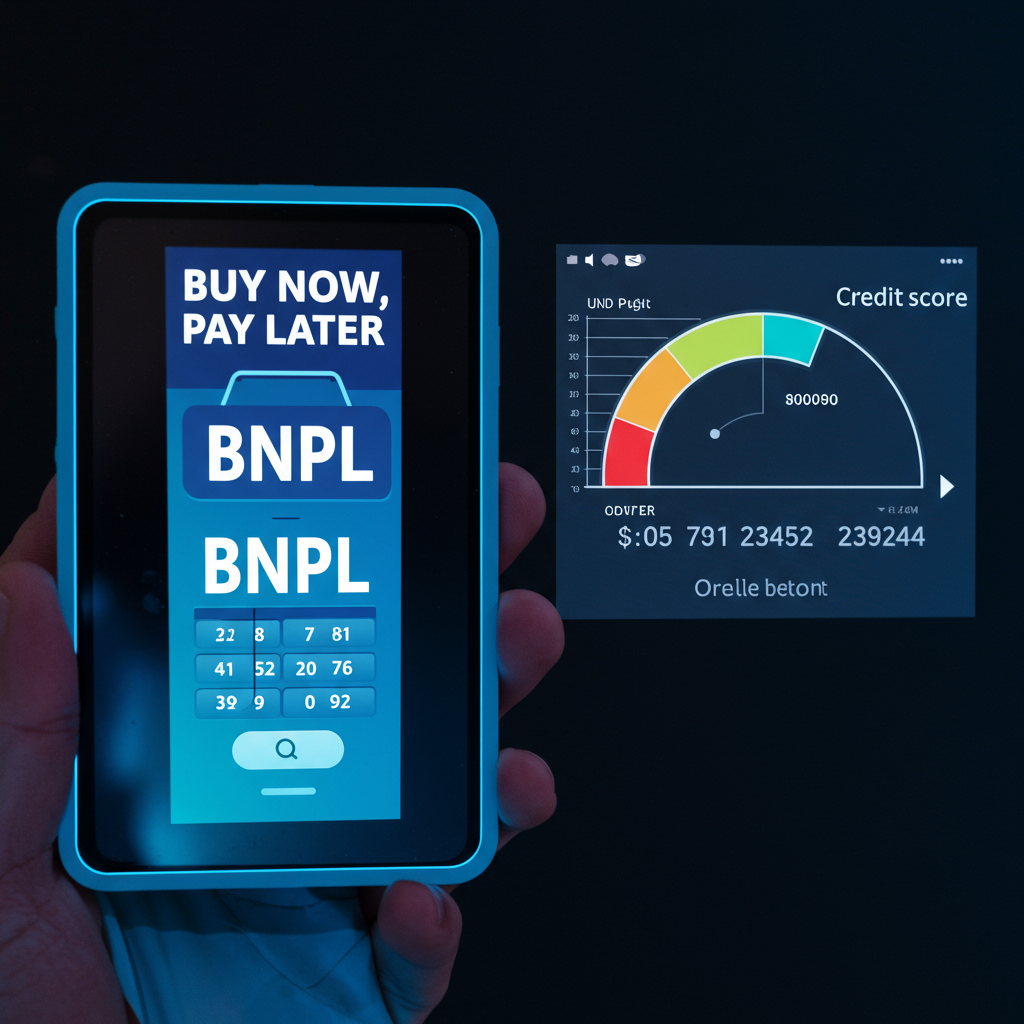Buy Now, Pay Later (BNPL) services, once seen as simple payment alternatives, are rapidly transforming how consumers handle purchases. These flexible installment plans have exploded in popularity, becoming a common sight at online checkouts and in retail apps. For years, using BNPL typically didn’t show up on your traditional credit report. However, a significant shift is underway: data from your BNPL <a href="https://news.quantosei.com/2025/07/05/buy-now-pay-later-will-soon-impact-your-credit-score/” title=”Important: How Buy Now Pay Later Impacts Your Credit Score”>payments is now starting to influence your credit score. This change holds major implications for millions of Americans, impacting how lenders view your financial reliability and your future borrowing power. Understanding what this means for your credit is crucial right now.
What Exactly is Buy Now, Pay Later (BNPL)?
Think of Buy Now, Pay Later as a modern twist on layaway, offering instant gratification. Instead of paying upfront or using a traditional credit card, a third-party lender (like Affirm, Klarna, Afterpay, or Zip) allows you to receive your purchase immediately while splitting the cost into smaller payments over time.
The most common format is the “Pay in 4,” where the purchase price is divided into four equal installments, often due every two weeks. These short-term plans are typically interest-free if payments are made on time, though late fees can apply. Some providers also offer longer-term plans for larger purchases, which may include interest charges, similar to a traditional loan.
BNPL has seen explosive growth. A Federal Reserve report indicated that in 2024, 15% of American adults had used these services within the past year. Bankrate data from 2024 found nearly 2 in 5 Americans (39%) reported using BNPL, with usage spiking among younger demographics like millennials (55%) and Gen Z (51%).
Why the Rise in Popularity?
Consumers flock to BNPL for several reasons. Convenience is a major draw; it’s often a quick checkout option. Many use it to spread out the cost of a purchase, especially for non-essential items, or to manage cash flow between paychecks. For some, BNPL is a deliberate choice to avoid credit cards and their potentially high interest rates. For others, particularly those with limited or poor credit history, it’s simply the most accessible way to finance a purchase they can’t afford upfront. The average BNPL loan size was small in 2022, around $142, highlighting its use for everyday items as well as larger splurges.
The Major Shift: BNPL Data Joins Your Credit Report
For years, a key difference between BNPL and traditional credit products was that BNPL providers generally didn’t report your payment activity to major credit bureaus like Experian, TransUnion, or Equifax. This meant on-time BNPL payments didn’t help build your credit score, and crucially, missed payments typically wouldn’t hurt it (unless the debt went to collections).
This “blind spot” for lenders is now changing. The credit scoring giant FICO recently announced it will incorporate Buy Now, Pay Later data into some of its widely used credit scoring products. Starting in the fall, two of FICO’s scores will begin considering this payment information.
Why the change? FICO Vice President Julie May explained the move reflects how significantly BNPL has become integrated into consumers’ financial lives. Lenders have actively sought this information. Adam Rust, director of financial services at the Consumer Federation of America, highlighted that previously, lenders might offer excessive credit because they weren’t aware of existing BNPL obligations. Including this data gives lenders a fuller financial picture, aiming for safer lending decisions that don’t overburden consumers.
Some BNPL providers have already started reporting. Affirm, a major player, began sharing data on all its pay-over-time loans, including the popular Pay in 4 plan, with Experian in April 2025 and TransUnion in May 2025. This marks a significant move to integrate short-term BNPL activity into the traditional credit system.
How BNPL Payments Will Affect Your Credit Score
The impact of BNPL data on your credit score boils down to payment behavior, just like credit cards or loans.
Paying on time: Consistently making your BNPL payments by the due date should have a positive effect on your credit score. This demonstrates responsible financial behavior, contributing to your payment history, the most influential factor in credit scoring.
Missing or late payments: Failing to make payments on time will likely hurt your credit score. Late fees can accrue, and now, this delinquency will be visible on your credit report, potentially lowering your score and making future borrowing more difficult or expensive.
FICO conducted a yearlong study incorporating BNPL data. Their findings suggested a relatively small impact for most users, with over 85% seeing their scores shift by less than 10 points either up or down. However, they did not disclose the impact on the remaining 15%, suggesting a more significant effect is possible for some.
Not a Magic Credit Builder
While responsible BNPL use can now potentially help build credit, especially for individuals with limited credit history, experts caution against expecting dramatic results from infrequent use. The impact is likely tied to the overall usage and payment history, similar to other credit products.
Conversely, the risk of negative impact is real. A Federal Reserve study found that almost a quarter of people using these loans reported making a late payment last year. As FICO’s Julie May emphasized, the core principles of creditworthiness remain the same: on-time payments, responsible credit utilization, and understanding your borrowing capacity.
BNPL Versus Credit Cards: Key Differences and Risks
While both Buy Now, Pay Later and credit cards offer ways to finance purchases, they have crucial differences that affect consumers and carry distinct risks.
Historically, the application process differed significantly. Credit cards usually require a hard credit check, which can temporarily ding your score and has stringent approval standards. BNPL, especially for short-term plans, often involves only a soft check (which doesn’t affect your score) or no check at all, leading to easier, instant approval at checkout.
A critical distinction lies in consumer protections. Credit cards offer robust protections under federal law, including the right to dispute fraudulent charges, receive refunds for returned items even if the seller doesn’t cooperate, and clear billing statements. BNPL historically lacked these safeguards. While the Consumer Financial Protection Bureau (CFPB) previously attempted to issue rules treating BNPL like credit cards to extend these protections, the agency under the Trump administration later stated it would not enforce and might rescind that rule, leaving the regulatory landscape uncertain. Consumers using BNPL should be aware they may not have the same recourse if a purchase goes wrong compared to using a credit card.
Shared Risks: Overspending and Debt
Despite their differences, both BNPL and credit cards share the significant risk of encouraging overspending and leading to debt. The ease of splitting payments with BNPL can make a purchase seem more affordable than it is, tempting consumers to buy items they otherwise wouldn’t.
Multiple studies indicate that BNPL users are disproportionately more likely to be already highly indebted and carry credit card balances. This suggests BNPL is often used by consumers facing financial challenges, potentially worsening their debt situation. The ease of opening multiple BNPL accounts across different providers (a loophole noted by advocates in countries like Australia where BNPL is now regulated like credit) makes it easy to accumulate debt quickly, which can be difficult to track. A CFPB report found approximately 60% of BNPL users have taken out multiple loans. This contributes to the broader trend of rising consumer debt.
Even credit card issuers are now offering BNPL-like features, allowing cardholders to convert eligible purchases into fixed installment plans with set fees or interest rates. This blurs the lines further but still offers the card’s existing protections.
Navigating BNPL in the New Landscape
With BNPL data now impacting credit scores, consumers must treat these services with the same seriousness as traditional credit.
Understand the Terms: Always read the fine print. Know the payment schedule, potential late fees, and whether the plan accrues interest.
Track Your Payments: Stay organized, especially if using multiple services. Missing a payment will now likely show up on your credit report. Use apps or calendars to keep track of due dates.
Assess Affordability: Before using BNPL, ask yourself if you could truly afford the full purchase price if needed. Avoid using it for impulse buys you can’t budget for.
Be Mindful of Multiple Plans: Taking out several BNPL loans simultaneously can quickly lead to unmanageable debt and make tracking payments difficult, increasing the risk of missing a payment and hurting your credit.
Consider the Credit Impact: Recognize that on-time payments can help your score, while late payments will harm it. For those looking to build credit, consistent on-time payments across various credit products, including BNPL now, are key.
This shift is a reminder that most forms of credit come with responsibility. How you manage your BNPL payments will increasingly influence your financial future.
Frequently Asked Questions
What does it mean that Buy Now, Pay Later is now affecting credit scores?
It means that major credit scoring companies like FICO are starting to include data about your BNPL loans and payment history in their calculations for some credit scores. Previously, this information was generally not reported. Now, responsible behavior like making payments on time can potentially help build your credit history, while missing payments will likely hurt your score, similar to how credit cards or traditional loans affect your score.
Which credit scores will include BNPL data, and when?
According to FICO, two of their approximately 15 different credit scoring products will begin incorporating BNPL data starting in the fall of 2025. Some Buy Now, Pay Later providers, such as Affirm, have already started reporting all* their pay-over-time loans, including short-term plans, to specific credit bureaus like Experian (starting April 2025) and TransUnion (starting May 2025). The impact on different FICO versions or scores from other companies like VantageScore may vary over time as reporting becomes more widespread.
Should I stop using Buy Now, Pay Later because it affects my credit score?
Not necessarily. If you use BNPL responsibly and consistently make all your payments on time, it can potentially help build a positive credit history, especially if you have a limited file. However, if you struggle to keep track of payments or are prone to overspending when using BNPL, the risk of negatively impacting your credit score by missing payments is significant. The key is treating BNPL obligations seriously and ensuring you can comfortably afford the repayments on time, every time.
In conclusion, the integration of Buy Now, Pay Later data into credit scores is a significant development reflecting the changing landscape of consumer finance. While offering potential benefits for responsible users seeking to build credit, it also brings the risk of financial penalties and negative credit impacts for those who fail to manage their payments effectively. As BNPL becomes part of the traditional credit system, treating it with the same discipline and awareness as any other loan or credit product is essential for protecting your financial health.
Word Count Check: 1110


